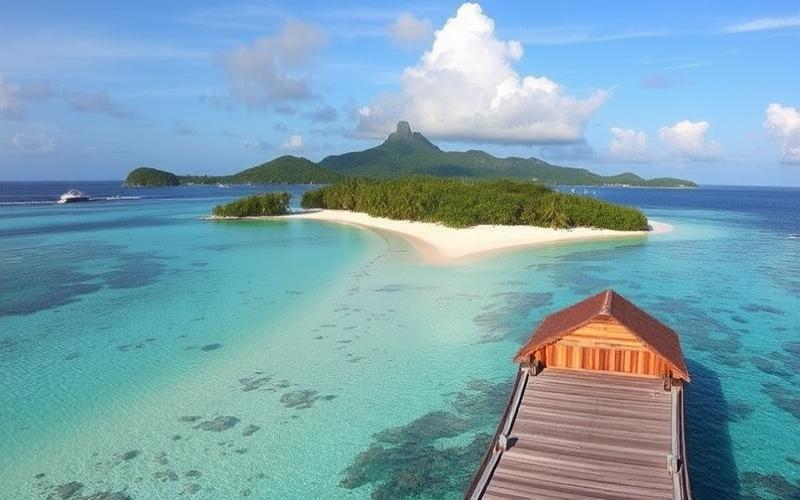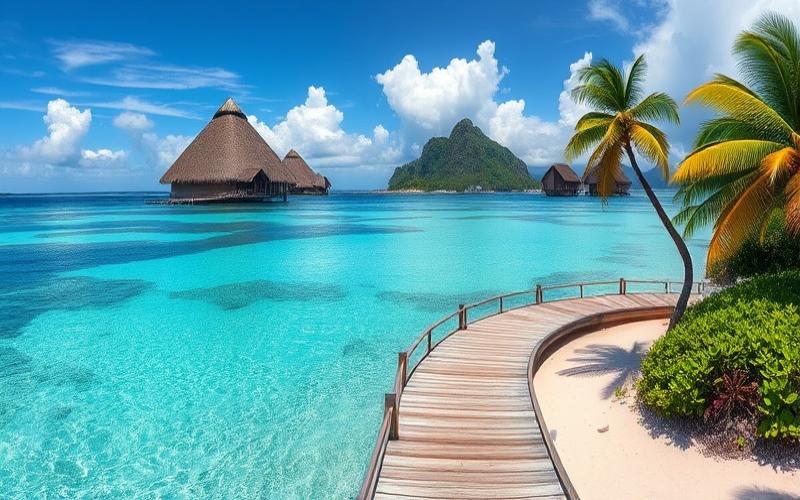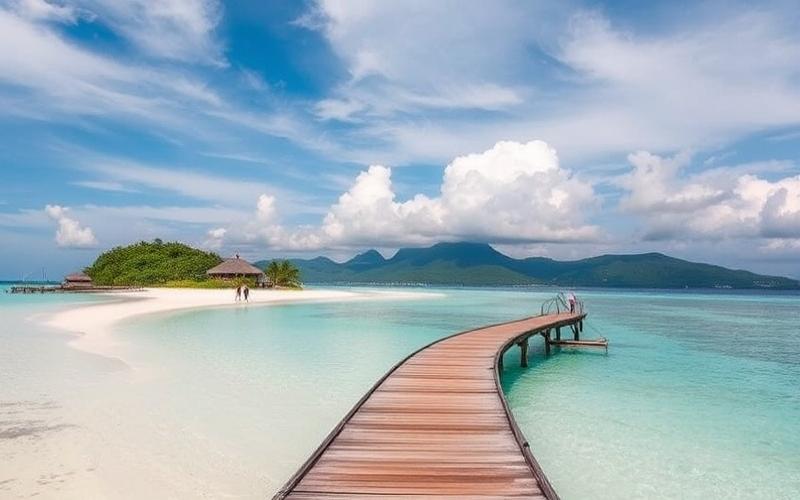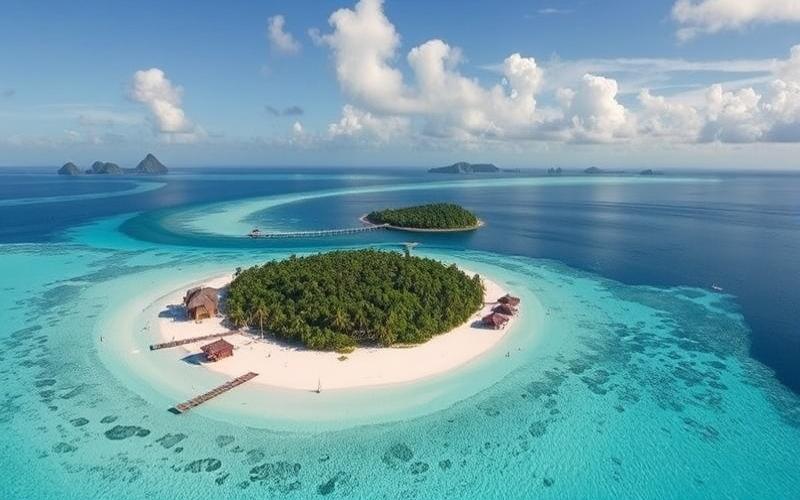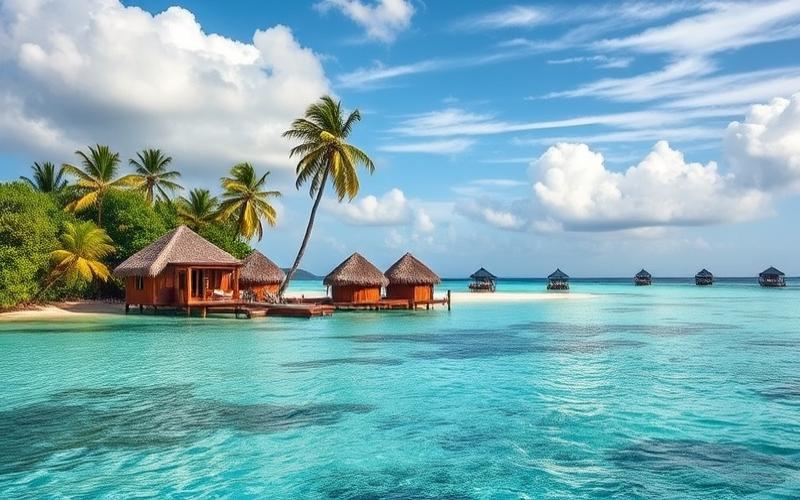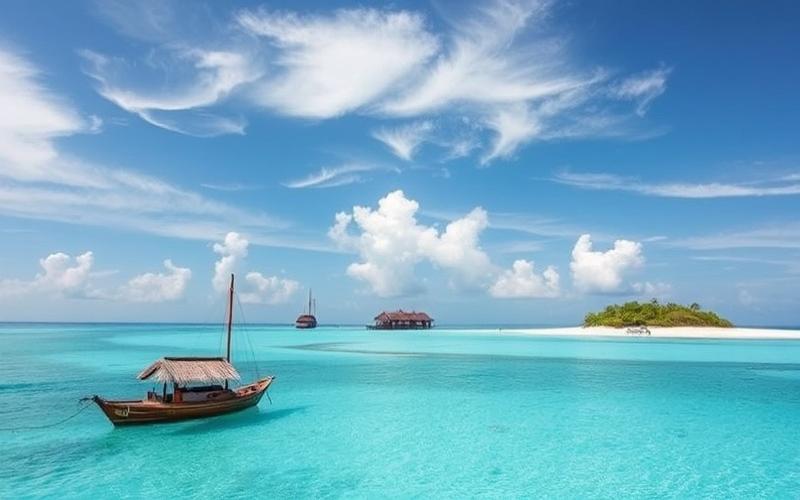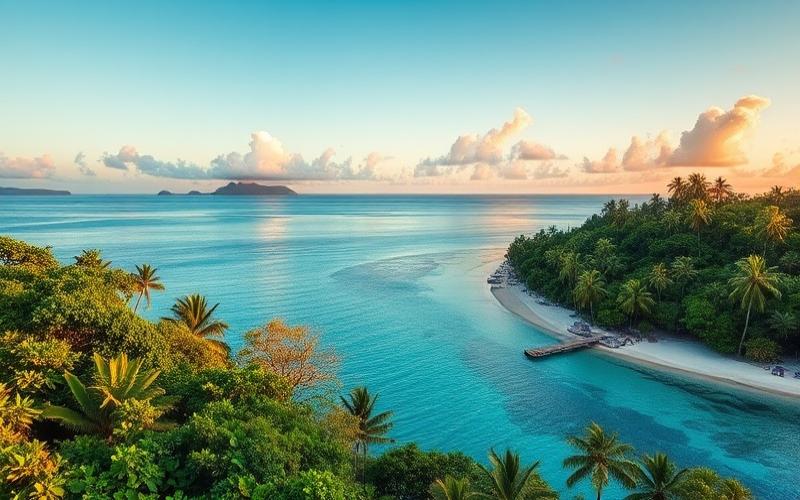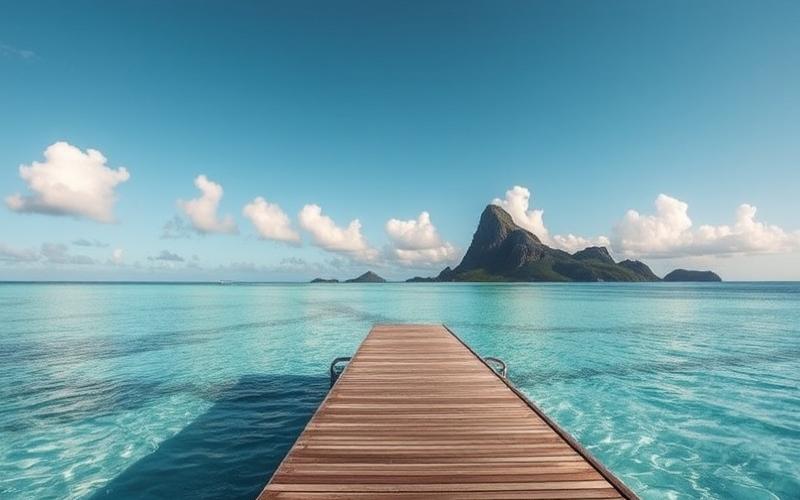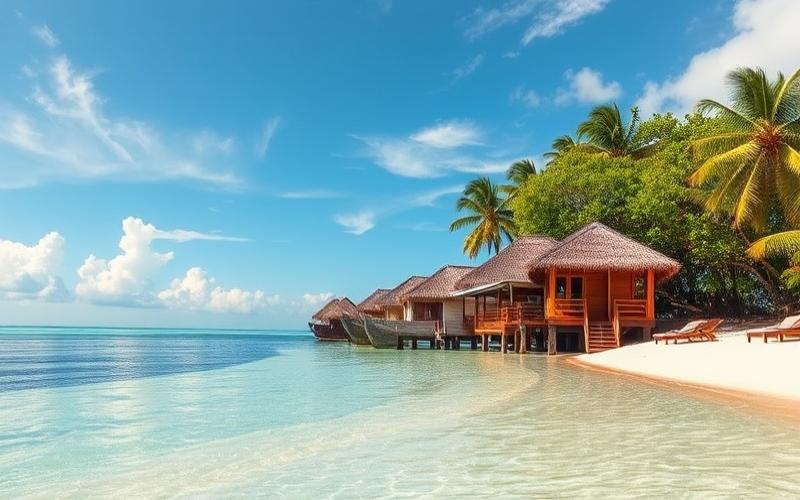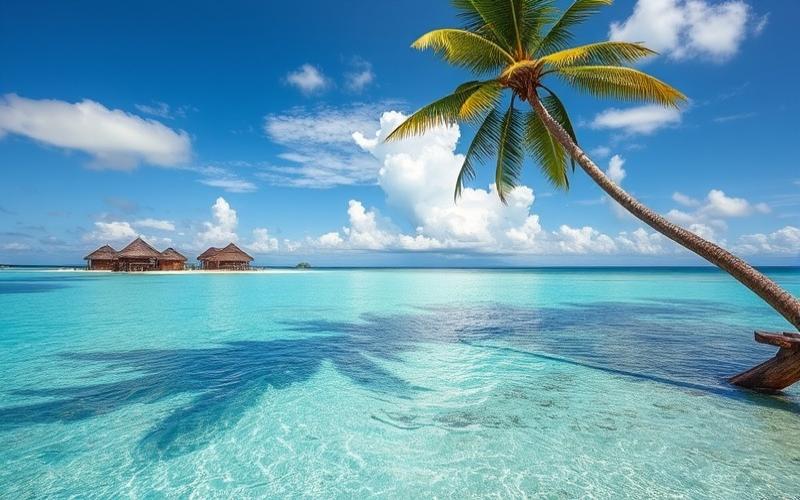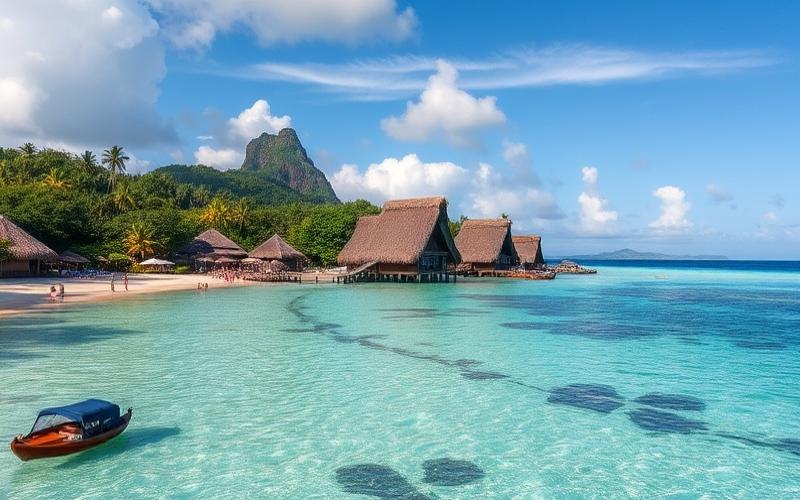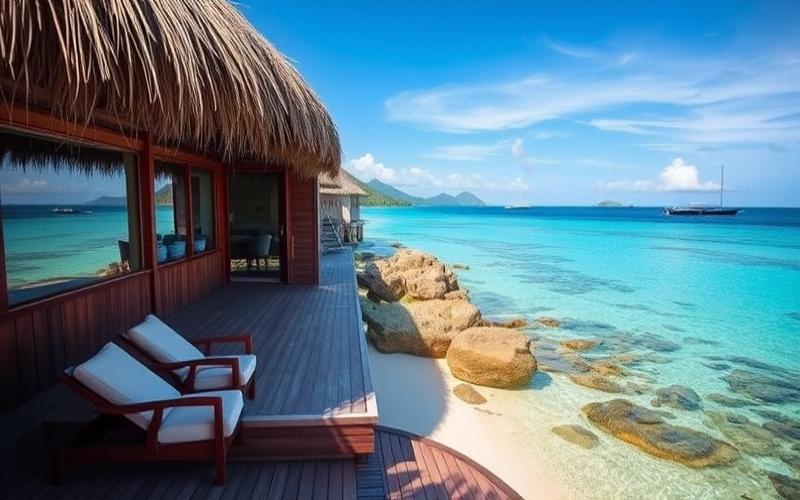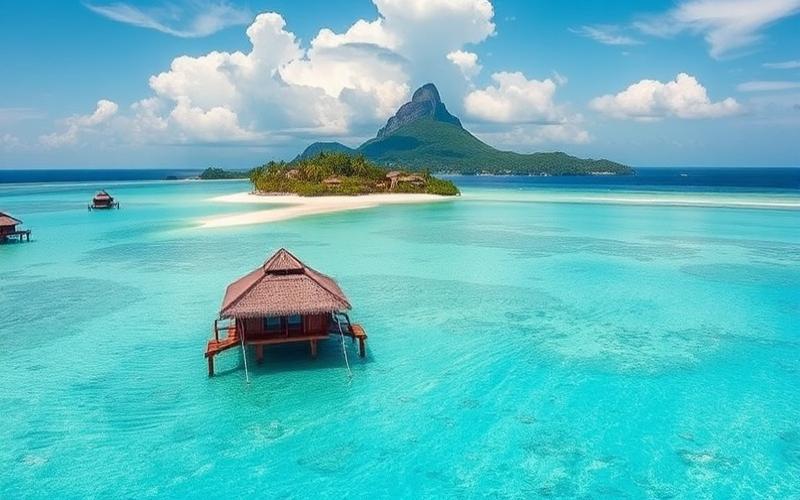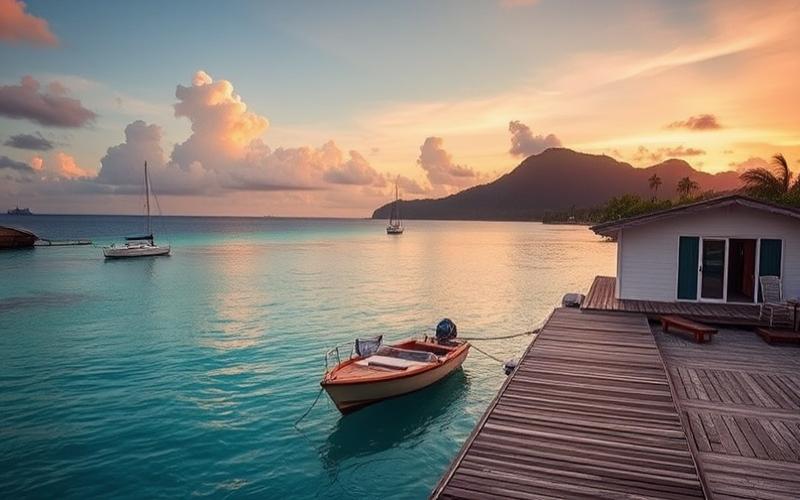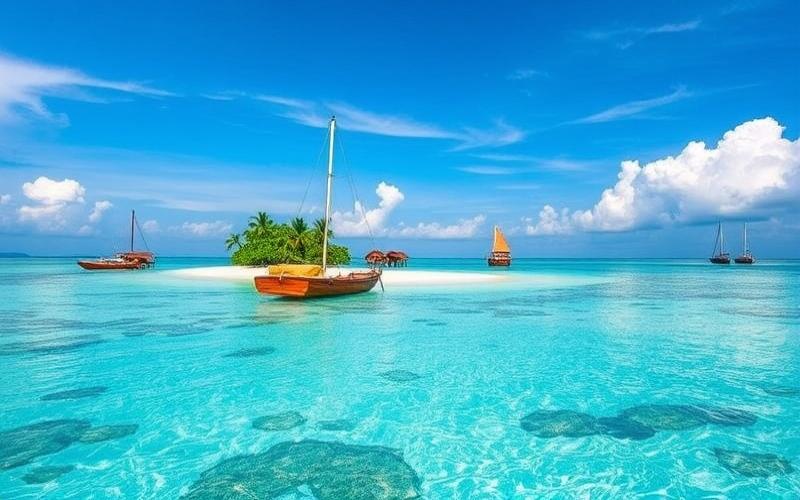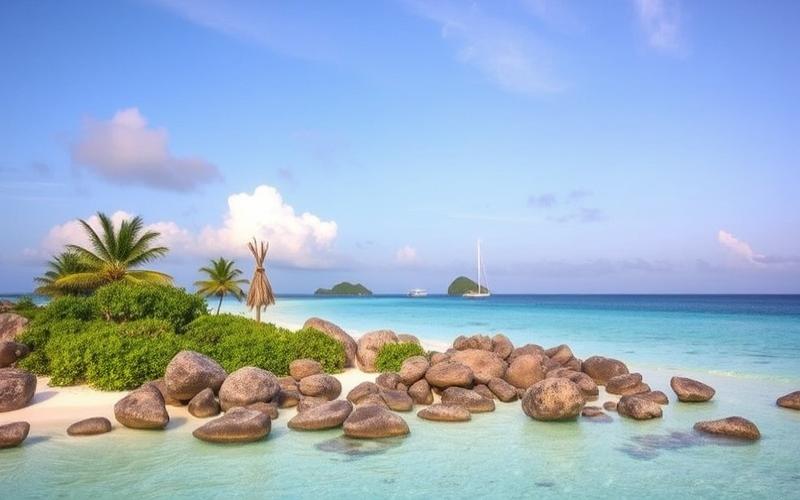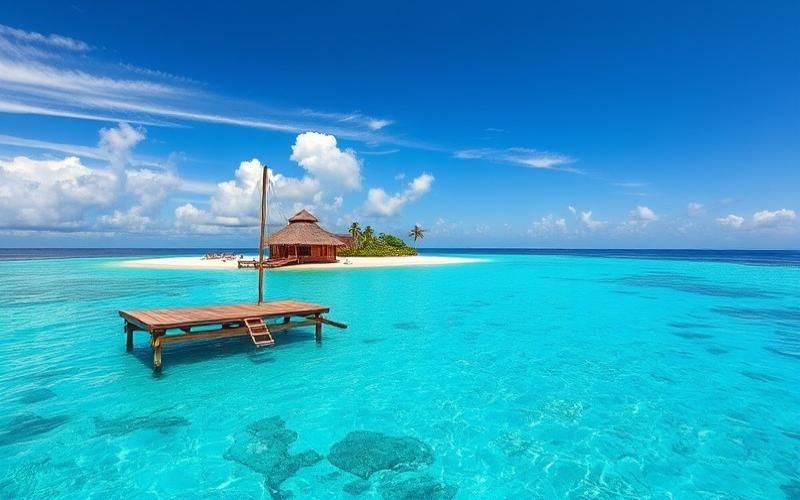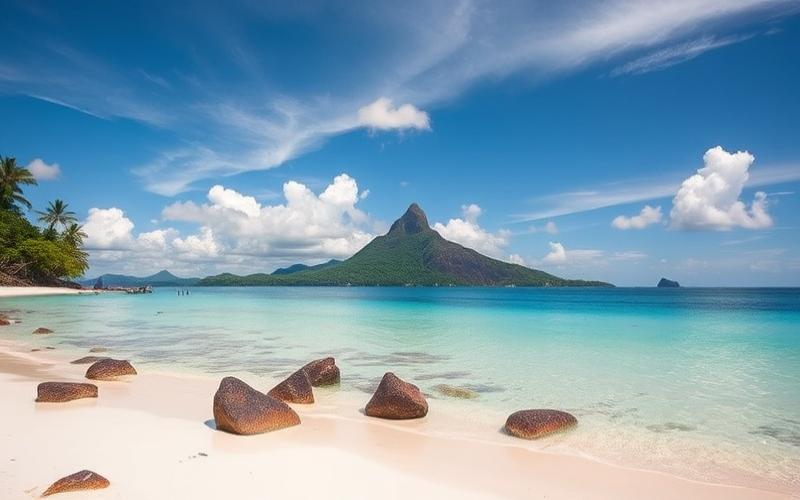
 Published on and written by Cyril Jarnias
Published on and written by Cyril Jarnias
The Seychelles, an archipelago comprising 115 tropical islands, offers an idyllic setting in the heart of the Indian Ocean. This island nation captivates with the beauty of its landscapes and the richness of its biodiversity. Let’s dive into the unique geography of this small earthly paradise.
Geographical Location
The Seychelles are located in the Indian Ocean, approximately 1,600 km off the East African coast. The archipelago stretches between 4° and 10° south latitude, slightly south of the equator. It occupies a strategic position between Africa and Asia, halfway between Madagascar and India.
- Total area: 455 km²
- Exclusive economic zone: approximately 1.4 million km²
- Distance from the East African coast: approximately 1,600 km
- Distance from Madagascar: approximately 1,000 km
Good to know:
Despite their distance from the African coast, the Seychelles are considered part of the African continent from a geopolitical perspective.
Main Regions and Islands
The Seychelles archipelago is divided into two main groups:
1. The Inner Islands
This group includes the granitic islands, which are the oldest and most populated. Among them are:
– Mahé: the largest island (144 km²) and the country’s economic heart – Praslin: the second largest island, famous for the Vallée de Mai – La Digue: the third most populated island, renowned for its paradise beaches – Silhouette, North Island, and several other small islands
2. The Outer Islands
These are mainly coral atolls and coral islands, less populated and more remote. Among them:
– Aldabra Atoll: the world’s largest raised coral atoll – The Amirante Islands – The Alphonse Islands – The Farquhar Islands
Good to know:
The Inner Islands concentrate almost the entire population and tourist infrastructure, while the Outer Islands are often protected nature reserves.
Main Cities and Urban Centers
Victoria: The Capital
Victoria, located on Mahé Island, is the largest city and capital of the Seychelles. With approximately 26,000 inhabitants, it is considered one of the smallest capitals in the world. Victoria is home to:
– The country’s main port – Seychelles International Airport – The main administrative and government buildings – The colorful Sir Selwyn Selwyn-Clarke Market
- Anse Boileau (Mahé)
- Beau Vallon (Mahé)
- Anse Royale (Mahé)
- Baie Sainte Anne (Praslin)
- La Passe (La Digue)
Good to know:
Despite its status as the capital, Victoria retains the charm of a small tropical town, reflecting the relaxed atmosphere characteristic of the Seychelles.
Topography and Landscapes
The Seychelles offer a surprising diversity of landscapes for such a small territory:
Granitic Islands: – Rugged terrain with mountains and hills – White sand beaches lined with iconic granite rocks – Lush tropical forests
Coral Islands: – Flat terrain – Turquoise lagoons – Mangrove and coconut grove vegetation
Highest point: Morne Seychellois (905 m) on Mahé Island
Good to know:
The famous granite rocks of the Seychelles, polished by erosion, create unique formations that make the archipelago’s beaches renowned.
Neighboring Countries and Maritime Borders
As an island nation, the Seychelles have no land borders. Their maritime neighbors are:
– Madagascar (to the southwest) – Comoros (to the west) – Tanzania (to the west) – Kenya (to the northwest) – Somalia (to the north) – Maldives (to the northeast) – Mauritius (to the south)
The Seychelles share maritime borders with several of these countries, thus defining its exclusive economic zone.
Good to know:
Despite their geographical isolation, the Seychelles maintain important diplomatic and economic relations with their Indian Ocean neighbors.
Climate and Environment
The Seychelles enjoy a tropical climate, characterized by:
– Warm temperatures year-round (24-32°C) – High humidity – Two main seasons: a drier season from May to October and a wetter season from November to April
The archipelago is recognized for its environmental protection efforts:
– Over 50% of the land territory is classified as protected area – Two UNESCO World Heritage sites: Vallée de Mai and Aldabra Atoll – Numerous endemic species in both fauna and flora
Good to know:
The Seychelles are at the forefront of the fight against climate change, with ambitious policies for the protection of marine and terrestrial environments.
Disclaimer: The information provided on this website is for informational purposes only and does not constitute financial, legal, or professional advice. We encourage you to consult qualified experts before making any investment, real estate, or expatriation decisions. Although we strive to maintain up-to-date and accurate information, we do not guarantee the completeness, accuracy, or timeliness of the proposed content. As investment and expatriation involve risks, we disclaim any liability for potential losses or damages arising from the use of this site. Your use of this site confirms your acceptance of these terms and your understanding of the associated risks.

